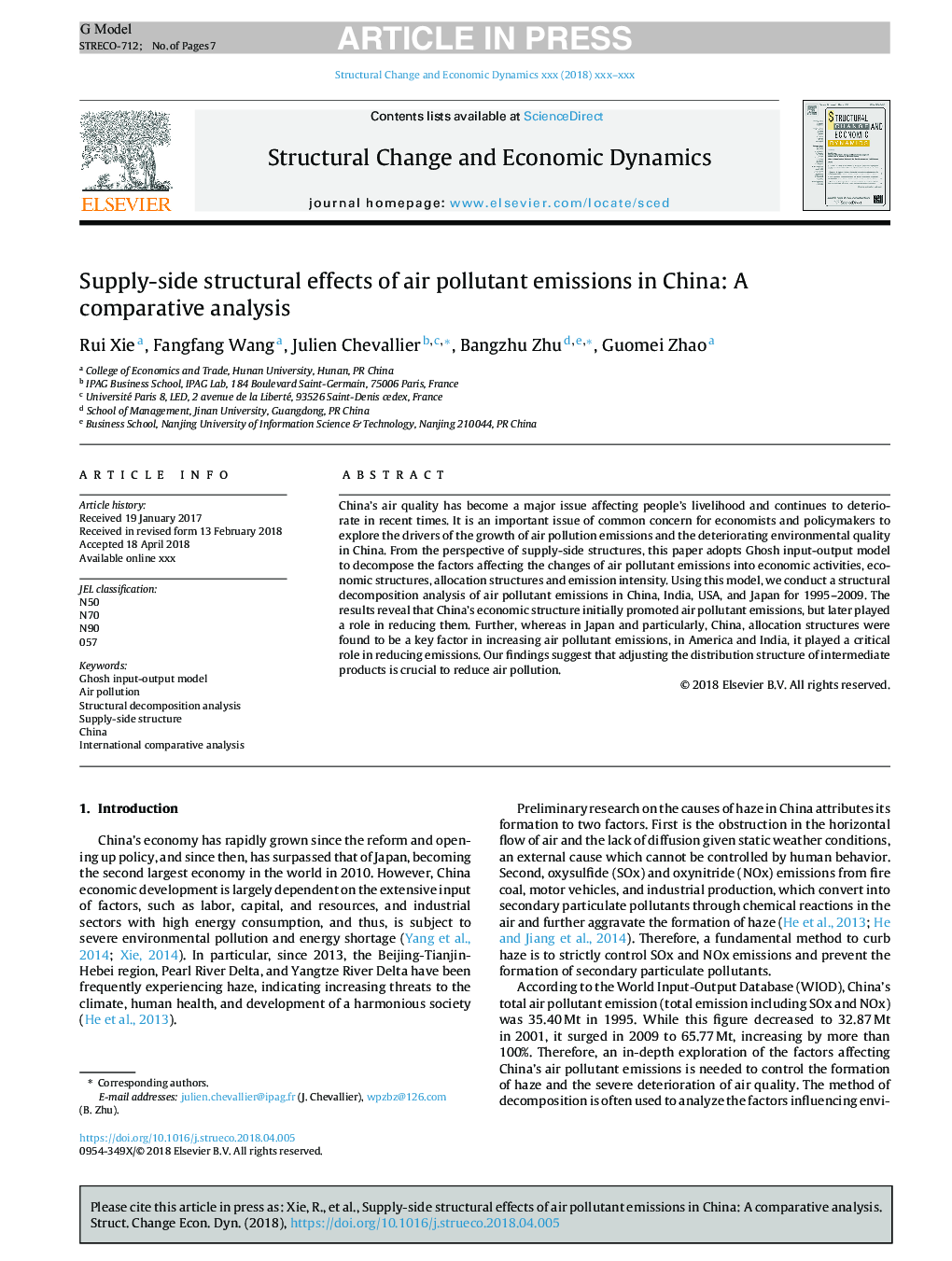| Article ID | Journal | Published Year | Pages | File Type |
|---|---|---|---|---|
| 10153829 | Structural Change and Economic Dynamics | 2018 | 7 Pages |
Abstract
China's air quality has become a major issue affecting people's livelihood and continues to deteriorate in recent times. It is an important issue of common concern for economists and policymakers to explore the drivers of the growth of air pollution emissions and the deteriorating environmental quality in China. From the perspective of supply-side structures, this paper adopts Ghosh input-output model to decompose the factors affecting the changes of air pollutant emissions into economic activities, economic structures, allocation structures and emission intensity. Using this model, we conduct a structural decomposition analysis of air pollutant emissions in China, India, USA, and Japan for 1995-2009. The results reveal that China's economic structure initially promoted air pollutant emissions, but later played a role in reducing them. Further, whereas in Japan and particularly, China, allocation structures were found to be a key factor in increasing air pollutant emissions, in America and India, it played a critical role in reducing emissions. Our findings suggest that adjusting the distribution structure of intermediate products is crucial to reduce air pollution.
Related Topics
Social Sciences and Humanities
Economics, Econometrics and Finance
Economics and Econometrics
Authors
Rui Xie, Fangfang Wang, Julien Chevallier, Bangzhu Zhu, Guomei Zhao,
